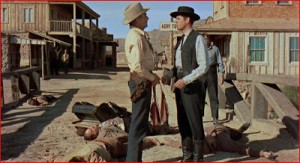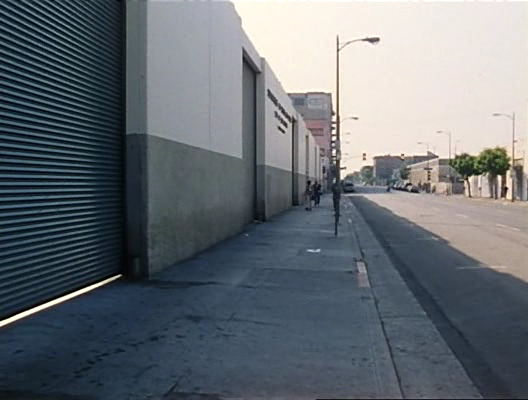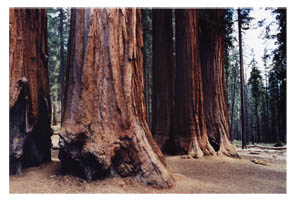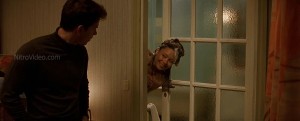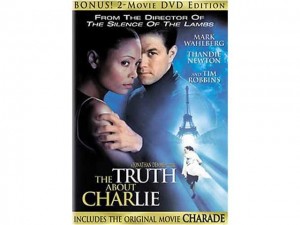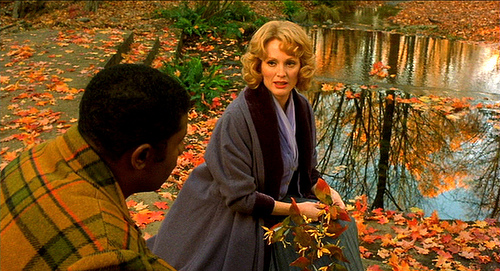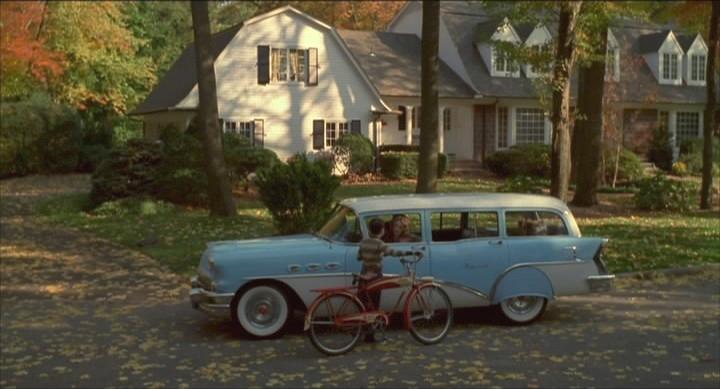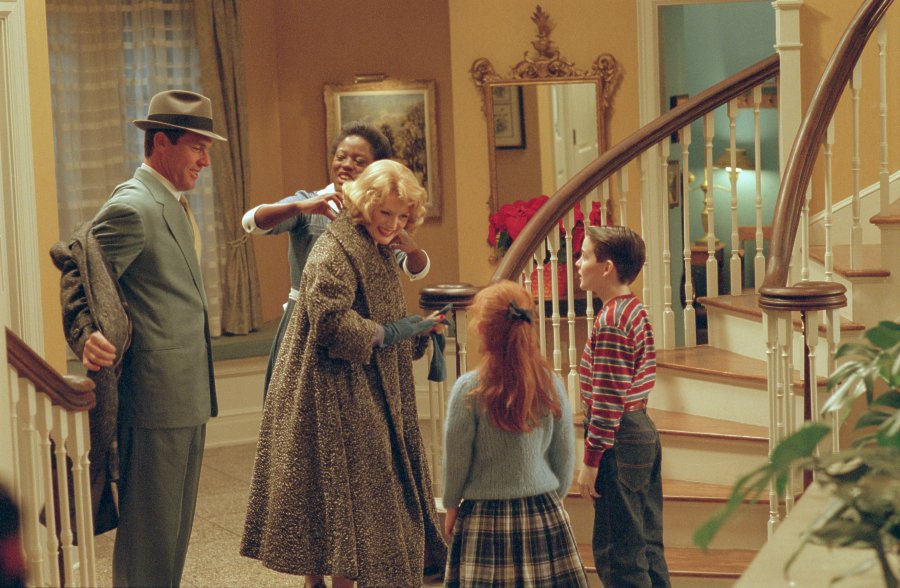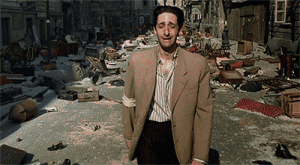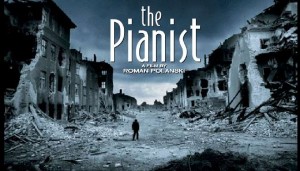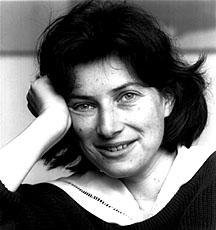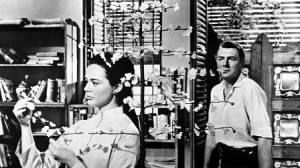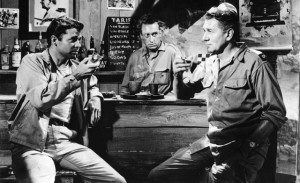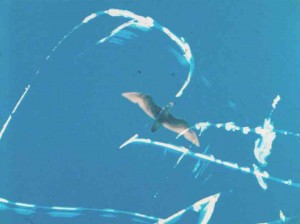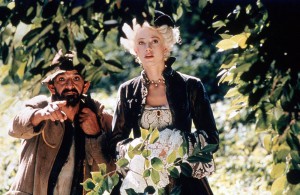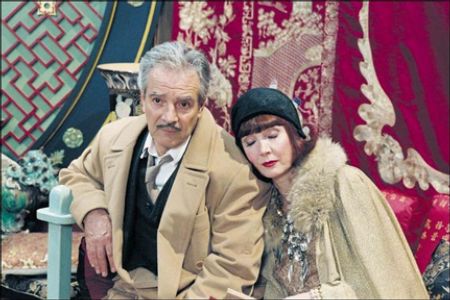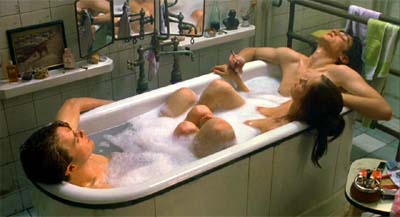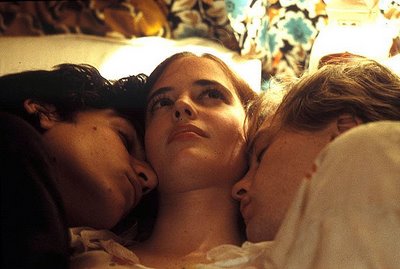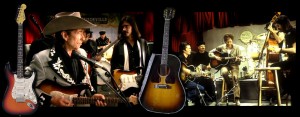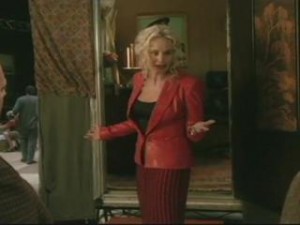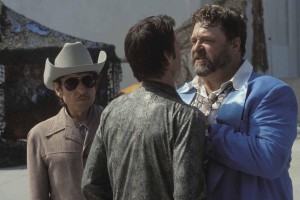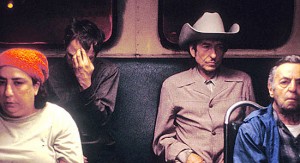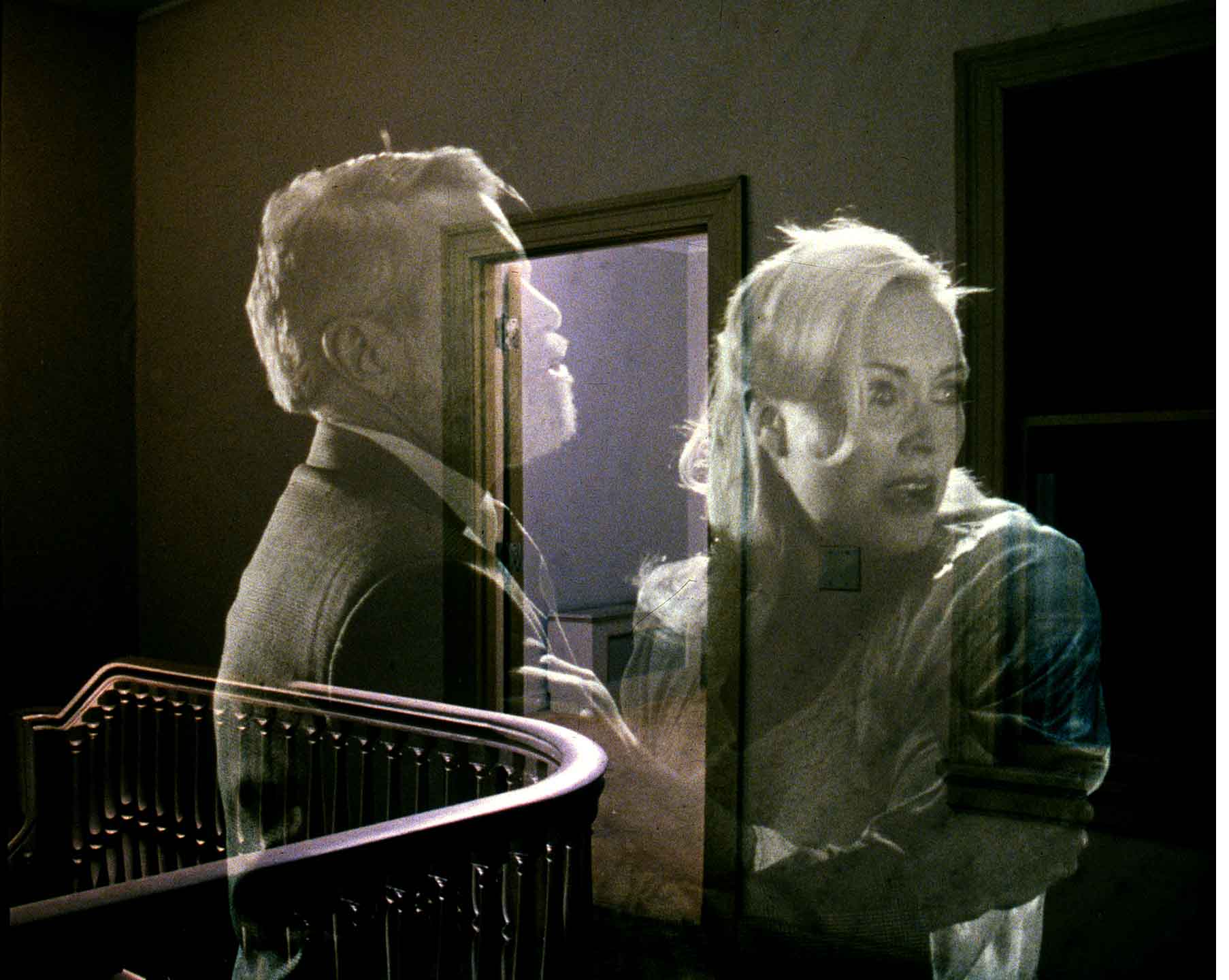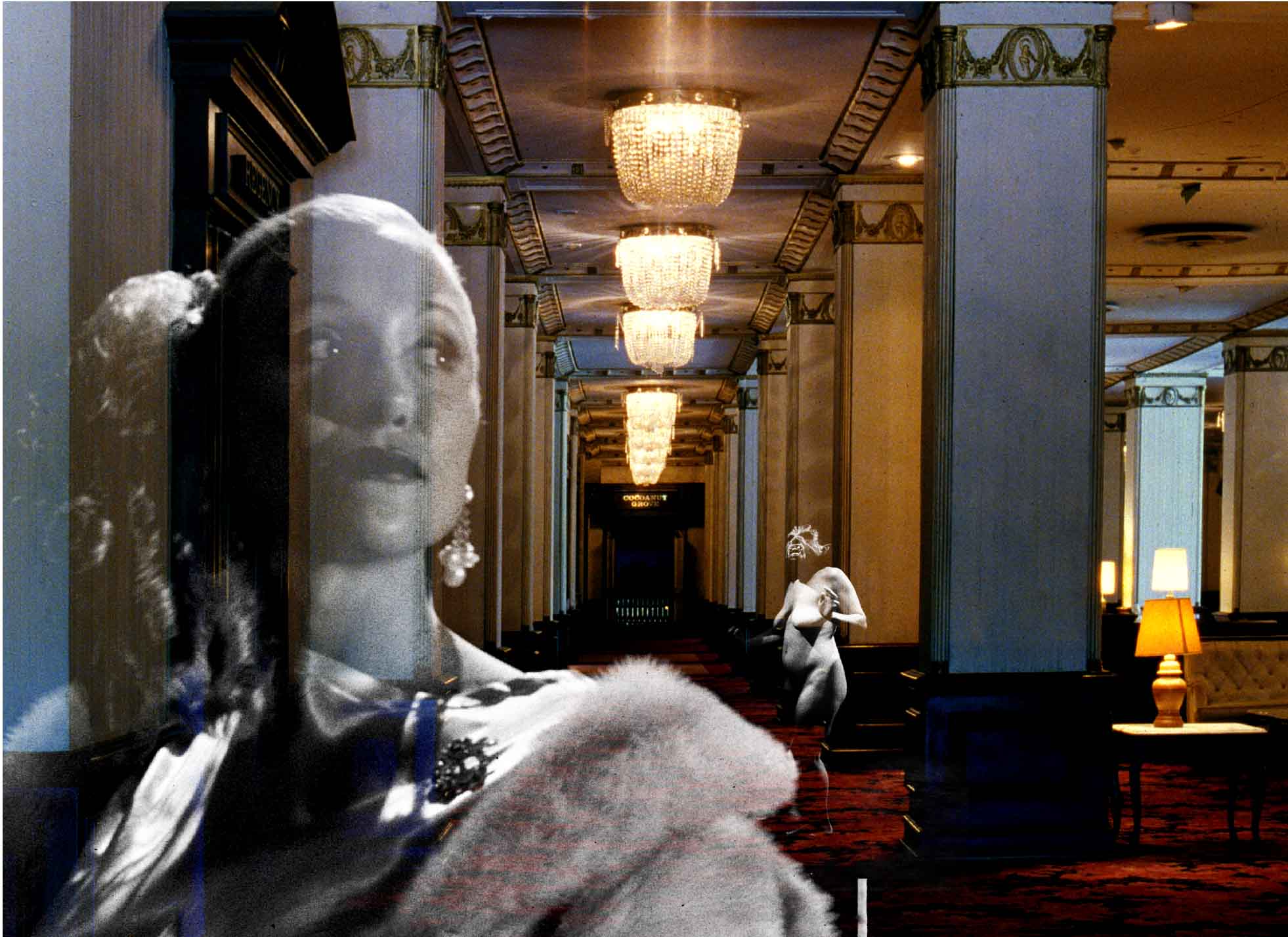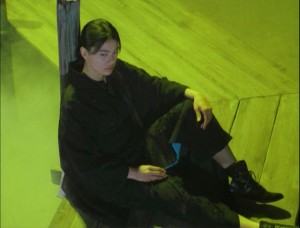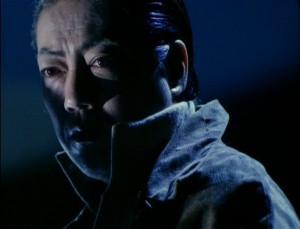In some respects this is my favorite of Budd Boetticher’s Randolph Scott westerns (1958, 78 min.), though it’s usually considered a minor work next to Ride Lonesome and The Tall T. After becoming innocently involved in a revenge killing in a small border town, Scott is robbed of his money and ordered away at gunpoint; he decides to go back for his money without really understanding all the local intrigues. Boetticher’s acerbic humor, always his strong point, is given more edge than usual here through an intricate Charles Lang script. With Craig Stevens, Barry Kelley, and Tol Avery. (JR) Read more
James Benning’s CALIFORNIA TRILOGY
From the March 15, 2002 Chicago Reader. — J.R.
California Trilogy
*** (A must-see)
Directed and written by James Benning.
Experimental films usually attempt to rearrange our reflexes along with our expectations. James Benning’s 270-minute, 16-millimeter “California Trilogy” does that in part by obliging us to rethink the way we interpret “directed by” and “written by.” If “directing” refers to the placement of camera and microphone, then Benning — who works alone, recording image and sound by himself — directed these three films. And if “writing” means the choice and identification of subjects — including the way they’re represented in the credits — then Benning is also the trilogy’s writer.
Benning — who will attend the March 21 screening of his film at the Film Center — placed his name at the end of the final credits of El Valley Centro, Los, and Sogobi, the three 90-minute features comprising his trilogy. Each feature consists of 35 shots lasting 150 seconds apiece, followed by final credits also lasting 150 seconds. Thirty-six times two and a half minutes equals an hour and a half; multiply that by three and you get 270 minutes, or four and a half hours. Read more
The Truth About Charlie
From the October 25, 2002 Chicago Reader. — J.R.
I’ve never regarded Stanley Donen’s romantic thriller Charade (1963) as a classic, but at least it has Cary Grant, Audrey Hepburn, Walter Matthau, and Paris. Jonathan Demme’s flat-footed remake has Mark Wahlberg, Thandie Newton, Tim Robbins, and Paris, none of them used very well. The various references to the French New Wave (appearances by Charles Aznavour, Anna Karina, and Agnes Varda, and a scene at Truffaut’s grave site) don’t help much either. But if Wahlberg in a beret is your idea of fun, don’t let me get in your way (at least no one ever says Ooh-la-la). The script, adapted from Peter Stone’s 1963 original, is by Demme, Steve Schmidt, Peter Joshua (Stone’s pseudonym), and Jessica Bendinger. 104 min. (JR)
Magnificent Repression [on FAR FROM HEAVEN]
From the November 22, 2002 Chicago Reader. — J.R.
Far From Heaven
**** (Masterpiece)
Directed and written by Todd Haynes
With Julianne Moore, Dennis Quaid, Dennis Haysbert, Patricia Clarkson, Viola Davis, and James Rebhorn.
It becomes apparent that in this context, for practical purposes, “Sirk” does not denote a mood or a philosophy or a set of plot elements, but rather a repertoire of technical decisions. With that lexicon of effects, new sentences can be written. — Geoffrey O’Brien, writing on Far From Heaven in the November issue of Artforum
Todd Haynes’s Far From Heaven — a revisionist pastiche of the Technicolor melodramas Douglas Sirk made for Universal Pictures in the 1950s — was easily, and in some ways deservedly, the most popular movie among critics at the Toronto film festival in September. Though less obviously a tour de force than many flashier recent art films, such as Alexander Sokurov’s one-take feature Russian Ark, it’s no less impressive as a technical achievement.
Despite the Toronto buzz, Far From Heaven may not become a hit, even in art theaters (though I’ve heard it had a strong opening week at the Landmark). Having twice discussed it with audiences (as part of Talk Cinema screenings at Northbrook and Pipers Alley), I’ve seen how it can divide viewers. Read more
The Pianist
From the Chicago Reader (June 1, 2002). — J.R.
Roman Polanski’s 2002 film about classical pianist Wladyslaw Szpilman (Adrien Brody), a Polish Jew who managed to survive the Warsaw ghetto, won the top prize at Cannes and an Oscar for best director, and it’s easy to understand why: Polanski, himself a survivor of the Krakow ghetto, is so authoritative in showing us what life there was like that this film makes more conventional heart tuggers like Schindler’s List shrivel to insignificance. He appears to follow Ronald Harwood’s adaptation of Szpilman’s autobiography with scrupulous thoroughness, as well as with the special patience that it takes to show a passive and mainly unheroic victim surviving. All of Polanski’s films reflect the grimness of his war experience in one way or another, and this feature serves to clarify some of the emotions and attitudes found in the others. The results are masterful, admirably unsentimental, and never boring, if also a little stodgy. The Polish dialogue is rendered as English, the German is simply subtitled. R, 148 min. (JR)
Romance of the Ordinary [on Chantal Akerman]
This was written for the January 26, 1990 issue of the Chicago Reader, a good five years before the premiere of at least one of my absolute favorite Akerman films: her non-fictional From the East (see the first photograph below; just below that is a smaller still from her subsequent From the Other Side in 2002, which isn’t exactly chopped liver either ). But in fact there were many high points and wonders from Akerman since then. — J.R.
THE FILMS OF CHANTAL AKERMAN
On one hand, the films of the 39-year-old Belgian filmmaker Chantal Akerman are about as varied as anyone could wish. Some are in 16-millimeter and some are in 35; some are narrative and some are nonnarrative; the running times range from 11 minutes to 205. The genres range from autobiography to personal psychodrama to domestic drama to comedy to musical to documentary to feature-in-progress — a span that still fails to include a silent, not-exactly-documentary study of a run-down New York hotel (Hotel Monterey), a vast collection of miniplots covering a single night in a city (Toute une nuit), and a feature-length string of Jewish jokes recited by immigrants in Brooklyn exteriors (Food, Family and Philosophy), among other oddities. Read more
The Quiet American [1958]
From the Chicago Reader (February 1, 2002). — J.R.
Joseph L. Mankiewicz’s 1958 adaptation of the Graham Greene novel certainly makes hash of its anti-American, procommunist elements, but this story about a disillusioned British journalist (Michael Redgrave) and an idealistic American (Audie Murphy) battling over the heart, mind, and body of a Saigon woman was sufficiently provocative for Jean-Luc Godard to declare it the best film of the year. The fact that Mankiewicz cast Italian actress Giorgia Moll as the woman suggests how remote he was from Vietnam, yet the scene in which the American asks the Brit to translate his marriage proposal into Vietnamese must have struck Godard: five years later he cast Moll as an interpreter in Contempt. Though The Quiet American may seem a curious cold war artifact today, it embodies Mankiewicz’s talky cinema in all its measured ambiguity. 120 min. (JR)
Ellipses Reels 1-4
My exposure to Stan Brakhage’s massive oeuvre has been somewhat limited, but these four works made in 1998 are among the most exciting and ravishing I’ve seen, rivaling even Scenes From Under Childhood (1970). Aptly described by J. Hoberman of the Village Voice as “scratch-and-stain films,” these mainly nonphotographic works “are, among other things, a visual analogue to abstract expressionism.” Reel 1 (22 min.) registers as visual music in its development of motifs and its use of rests to divide the work into discrete sections–a music that pulses, throbs, and sometimes winks on and off like a strobe light. Reel 2 (15 min.) credits Sam Bush as the “visual musician” and Brakhage as the “composer”; more staccato, dramatic, and richly orchestrated than the first reel, it occasionally recalls early Stravinsky in its fierce rhythms. Reels 3 (15 min.) and 4 (20 min.) are my favorites: the former uses bursts of photography (water, sky, birds, forest, sand, a nude child, merry-go-round horses), and the latter often suggests animation, with a black field disrupted by tantalizing bursts and smears of color. Also on the program are two Brakhage works I haven’t seen — Coupling (1999, 5 min.) and Night Mulch & Very (2001, 7 min.). Read more
Triumph Of Love
From the Chicago Reader (April 15, 2002). — J.R.
Clare Peploe’s mainly traditional adaptation of Pierre Marivaux’s 18th-century gender-bending romantic comedy has many of the virtues one would expect from the woman who made the highly entertaining High Season and Rough Magic. But despite the wonderful conclusion, when the film turns into a musical performed before a live audience, as well as the pleasures of the cast and the screenplay — which Peploe, working from an English translation by Martin Crimp, wrote in collaboration with her husband, Bernardo Bertolucci, who’s the movie’s producer, and screenwriter Marilyn Goldin — I was periodically put off by a certain self-consciousness of delivery. Mira Sorvino stars as a princess who, along with her lady-in-waiting (Rachael Stirling), dresses in drag in order to get close enough to the crown’s true heir (Jay Rodan) to offer him the throne that is rightfully his. Others in the cast include Ben Kingsley and Fiona Shaw. PG-13, 107 min. (JR)
The Past Recaptured
Not on the Lips
**** (Masterpiece)
Directed by Alain Resnais
Written by Andre Barde and Maurice Yvain
With Sabine Azema, Isabelle Nanty, Audrey Tautou, Pierre Arditi, Jalil Lespert, Daniel Prevost, Lambert Wilson, and Darry Cowl
Alain Resnais’ latest feature, Not on the Lips (2003), apparently won’t be shown in commercial theaters in this country. I can’t think of another French movie that’s given me as much pleasure in years—it’s his best since Melo (1986) and surely his most accessible to American audiences. It is showing twice this week in the Gene Siskel Film Center’s European Union festival, and its U.S. distributor, Wellspring, will bring it out on DVD on March 22. DVDs are now more profitable than ticket sales, so I suppose it’s understandable that Wellspring doesn’t want to spend a fortune on a theatrical release. But this movie’s gorgeous visuals are still best seen first on a big screen.
In any case, this delightfully eccentric film of a 1925 French operetta, with its English subtitles laid out in rhyming couplets, can be enjoyed in any format. It has a harmonically rich score, which Resnais calls “brisk and hilariously jubilant,” and it’s brilliantly orchestrated by Bruno Fontaine, featuring counterpoint by Maurice Yvain that’s as lively as the wordplay in Andre Barde’s lyrics. Read more
Dream On (THE DREAMERS)
From the Chicago Reader (February 20, 2004). — J.R.
The Dreamers
** (Worth seeing)
Directed by Bernardo Bertolucci
Written by Gilbert Adair
With Michael Pitt, Eva Green, Louis Garrel, Robin Renucci, and Anna Chancellor.
Nostalgia is highly selective, abridging the past and adjusting it to fit the terms of the present — and often becoming an ideological con job in the process. Those who wax nostalgic about the radicalism of their youth usually imply that the values that made it so attractive back then also make it impossible to hold on to today.
Bernardo Bertolucci’s The Dreamers, set in Paris over three months in early 1968, focuses on an American student, Matthew (Michael Pitt), who becomes intimately involved with a French brother and sister, Theo (Louis Garrel) and Isabelle (Eva Green), whom he meets at the Cinémathèque. Invited into the siblings’ flat just before their parents leave on vacation, he gets drawn into their perverse and vaguely incestuous games, which combine charades involving movies, sex, and ultimately politics. Their interactions run parallel to the French government’s firing of the disorderly director of the Cinémathèque, Henri Langlois, and the ensuing outcry among cinephiles and filmmakers. Street demonstrations led to clashes with the police — and turned out to be dress rehearsals for the student demonstrations and workers’ strikes that May, which came dangerously close to shutting the country down. Read more
The Conformist
From the November 1, 1994 Chicago Reader.

In retrospect, Bernardo Bertolucci’s highly influential fifth feature (1969) — ravishing to the eye but less than fully satisfying to the mind — can be regarded as the lamentable turning point in an extremely promising career that ultimately chose stylishness over style and both over content. Following on the heels of his much superior The Spider’s Strategem and adapted from an Alberto Moravia novel set in 1938, this political thriller follows an Italian professor (Jean-Louis Trintignant) who’s recoiling from his own homosexual impulses as he agrees to work as a police agent during his honeymoon in Paris and assist in the assassination of his former mentor, now a dedicated antifascist. With Stefania Sandrelli, Dominique Sanda, Gastone Moschin, and Pierre Clementi. In Italian and French with subtitles. 115 min. (JR)

Masked and Anonymous
From the Chicago Reader (August 15, 2003). — J.R.
“Rene Fontaine” and “Sergei Petrov,” the credited screenwriters of this mannerist fantasy, are pseudonyms for star Bob Dylan and director Larry Charles, a veteran of Seinfeld. In fact, every character talks like Dylan, and his character, a legendary singer called Jack Fate who turns up between prison terms to perform a benefit concert, is a fanciful but recognizable version of his own persona. Set in a contemporary America that suggests an endless skid row, with such Latin American trimmings as an ongoing civil war and a dying dictator whose likeness hangs everywhere, this is at once a spin on Dylan’s mythology, an excuse to feature as many of his songs as possible, and an unblinking look at American greed, corruption, and self-absorption. And for all its pretensions and avant-garde narrative dislocations, the star-studded cast — including Jeff Bridges, Penelope Cruz, John Goodman, Jessica Lange, Luke Wilson, Angela Bassett, Val Kilmer, Mickey Rourke, and many others in cameos — keeps this buzzing. 106 min. Music Box.
Ghosts of Hollywood [THE DECAY OF FICTION]
From the Chicago Reader (May 30, 2003). — J.R.
The Decay of Fiction
*** (A must-see)
Directed by Pat O’Neill.
Truly original art tends to defy generic categories, and Pat O’Neill’s 35-millimeter, 73-minute The Decay of Fiction (2002), which Chicago Filmmakers is presenting this Saturday night at Northwestern University’s Block Cinema, is no exception. Inarguably an experimental work, it also reeks of classic Hollywood. The credits list O’Neill as producer, director, and editor and George Lockwood as cinematographer and sound designer, but no one is credited as the screenwriter — even though the film contains as much dialogue as any commercial feature, most of it apparently original. Forty-five cast members are cited alphabetically in those same credits, with no indication of who plays the most significant roles. Eight years in the making, the film partakes equally of the past (roughly the 1920s through the 1960s) and a disquieting version of the present.
It was filmed in and around LA’s Ambassador Hotel, which closed in 1989 and was slated for demolition at the time the film went into production in 1994 (although it was still standing when the film premiered last fall). The Decay of Fiction is both a color documentary about that crumbling edifice (where the first Academy Awards ceremony was held in 1929, and where Robert F. Read more
Pistol Opera
From the Chicago Reader. — J.R.
Japanese director Seijun Suzuki has called this 2001 feature a sequel to his 1967 stylistic exercise Branded to Kill. But that was a hit-man thriller in black and white; this is a sensual explosion in color, a surreal, deliriously balletic pop fantasy that defies most forms of narrative description. Shot for shot, it ranks as the most beautiful movie I’ve seen in years. The characters are four or five generations of women, most of them dressed to kill, with one, a determined hit woman named Stray Cat (Makiko Esumi), trying to shoot her way from third to first place in a hierarchy of assassins managed by an inscrutable and invisible “Guild.” The striking settings are industrial, urban, or rural locations, diverse theatrical stages, and otherworldly studio sets; the dialogue, in Japanese with subtitles, occasionally shifts to English (including recitations of Wordsworth and “Humpty Dumpty”); and the musical accompaniment periodically sounds like Miles Davis in an echo chamber. 112 min. Music Box.

